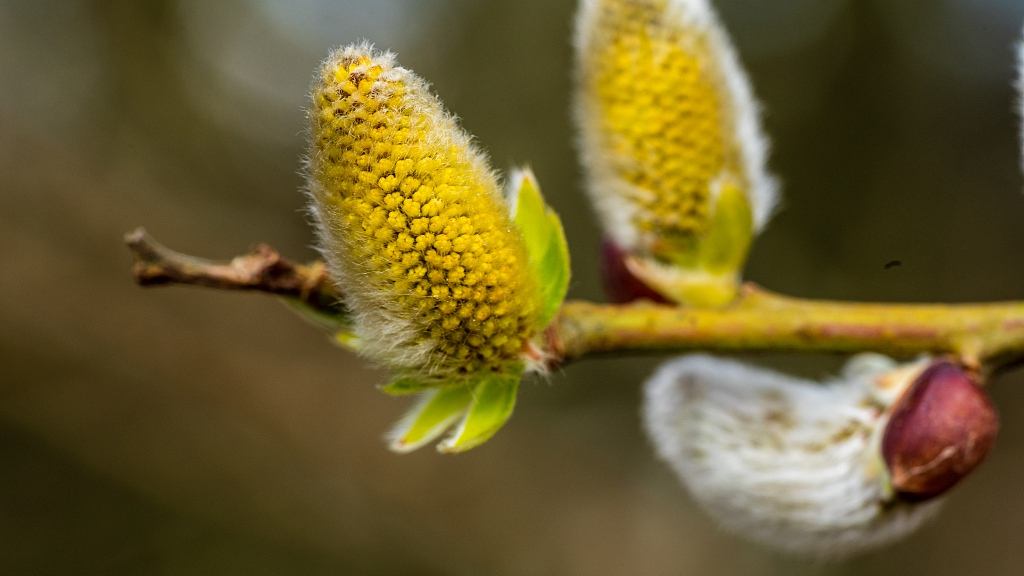Springtime in Beijing usually comes with white swirling stuff. The stuff is nicknamed "spring snow" – the seed hairs of poplars and willows trees – are usually a seasonal headache for people living in Beijing and other northern parts of China.
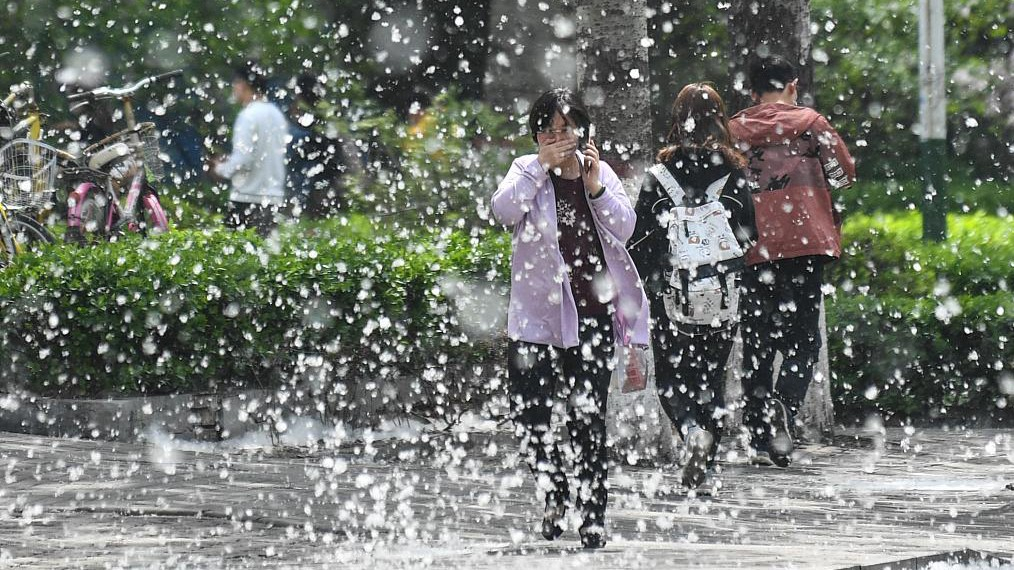
The annoying "spring snow" in north China's Shanxi Province. /VCG Photo
The annoying "spring snow" in north China's Shanxi Province. /VCG Photo
Elephants on Fire
Tiny and light like the seed of the dandelion, the hairy seeds would escape from the mature capsules of female poplars and willows trees when it is hot and dry. They hastily spread themselves to farther places to accomplish their mission of reproduction.
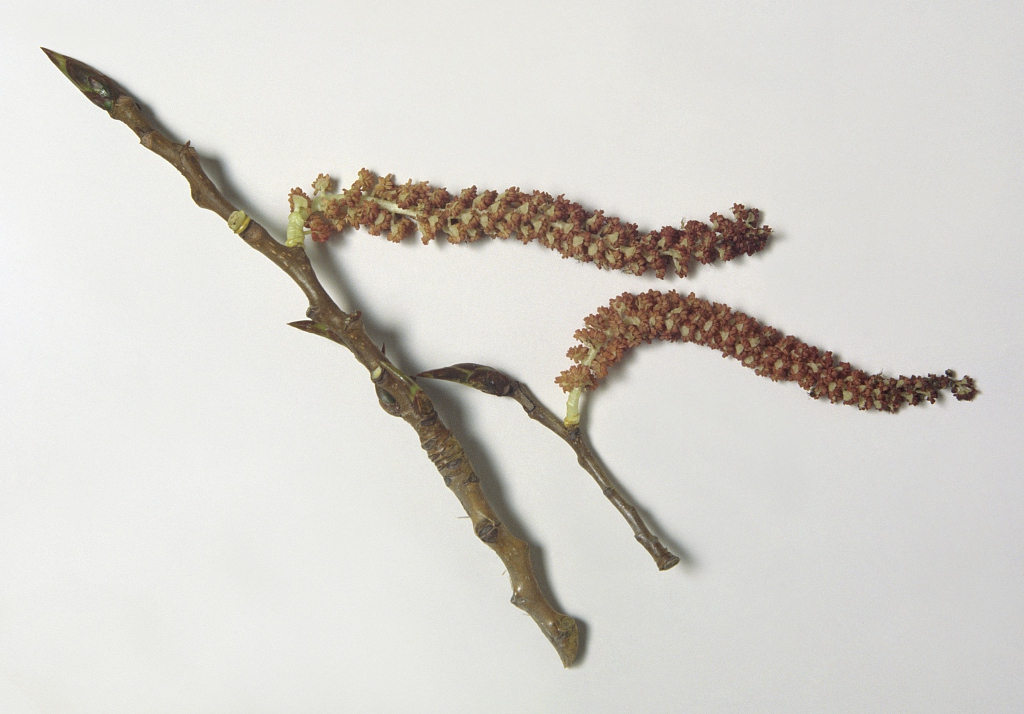
Catkins of black poplar. /VCG Photo
Catkins of black poplar. /VCG Photo
Sometimes, these silky uninhibited seeds get into people's eyes, noses or mouths. They can cause allergic reactions such as rhinitis, asthma and dermatitis. In fact, they are probably the scapegoat for the allergenic pollen trapped in the hairs.
"The seed hairs of poplars are not that allergenic. The flowering plants are the real cause. When the seeds of female Chinese white poplars are flying in April, it's the same time that the flowering male plane trees spread pollen, which is allergenic," professor Zhang Zhixiang from Beijing Forestry University told CGTN.
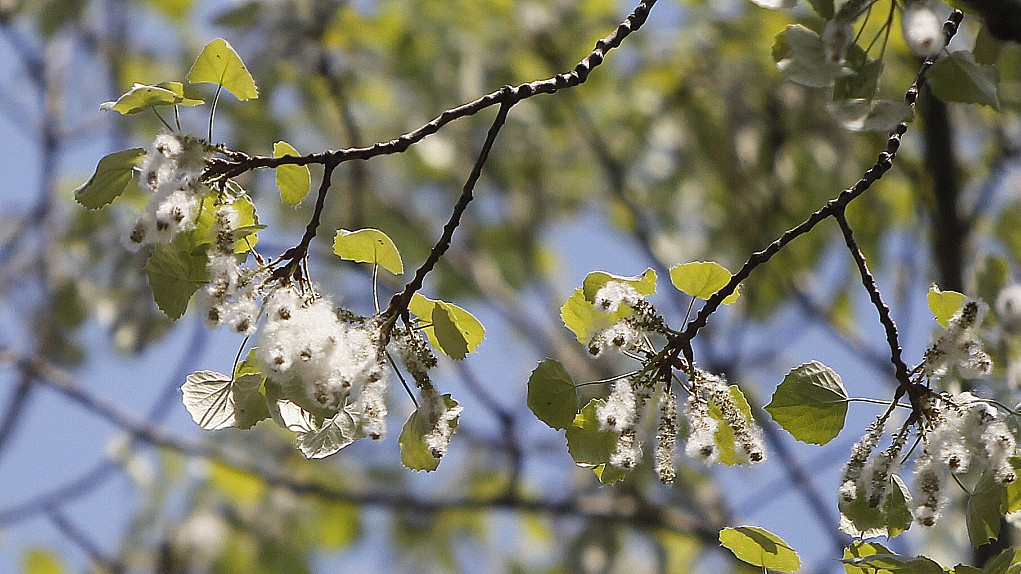
A blooming poplar tree in central China's Henan Province. /VCG Photo
A blooming poplar tree in central China's Henan Province. /VCG Photo
Compared to the indiscernible pollen, its carrier – hairy seed clusters – can be easily seen, which makes it the target of blame. Every year, one female poplar or willow tree can produce one to three kilograms of seed hairs.
In 2018, there were 284,000 female poplar and willow trees within Beijing's fifth ring road. The total weight of seed hairs floating in downtown Beijing is almost equal to that of 50 to 150 elephants.
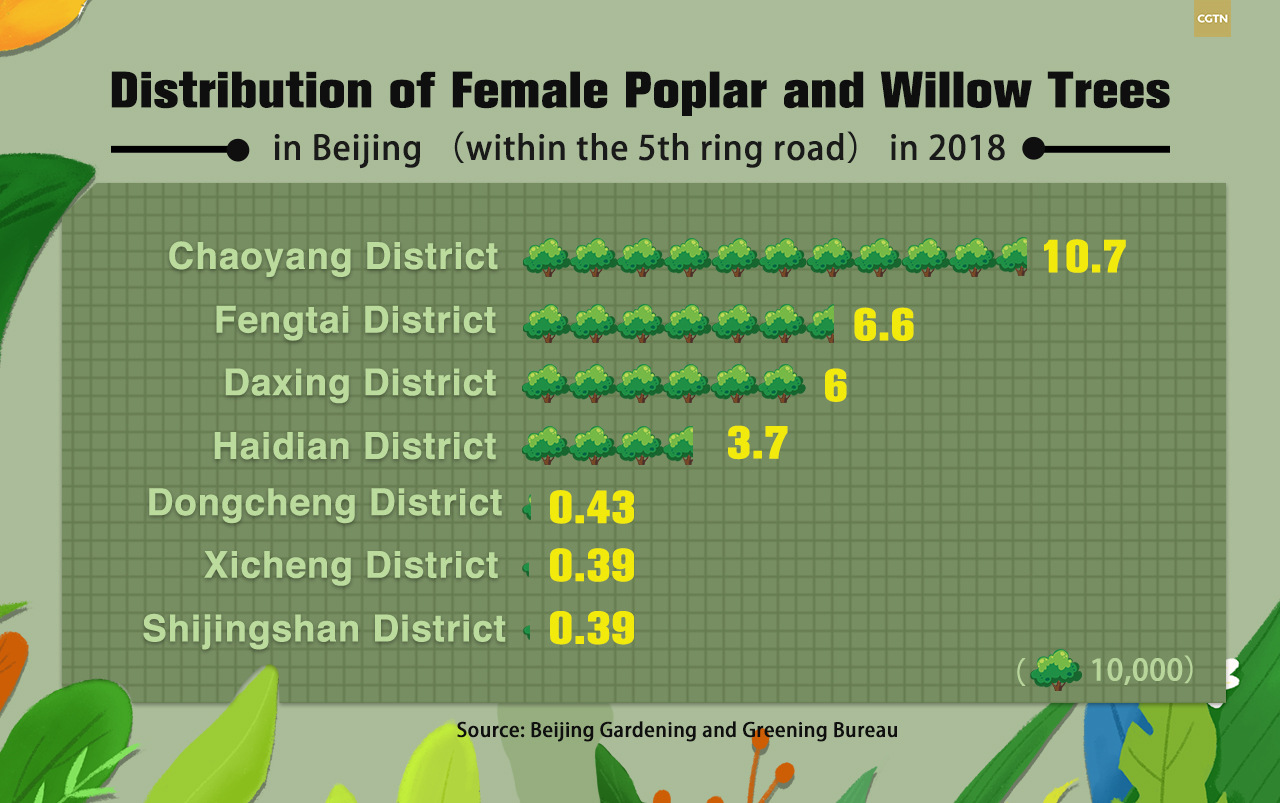
Distribution of female poplar and willow trees in Beijing within the 5th ring road by the end of 2018. /CGTN Graphic
Distribution of female poplar and willow trees in Beijing within the 5th ring road by the end of 2018. /CGTN Graphic
Similar to cotton, these piled-up seed hairs can trigger fires if a lit cigarette butt accidentally comes their way. Once ignited, the seed hairs of the size of a small bedroom would burn away in a mere two seconds, and the heat would kindle every combustible thing nearby.
Now, the seed hairs from poplars and willows seem to bother people greatly, but it wasn't a problem until the 1990s. Before that, the sandstorm in Beijing was the main concern, and that's when millions of poplars and willows were planted.
The Green Belt
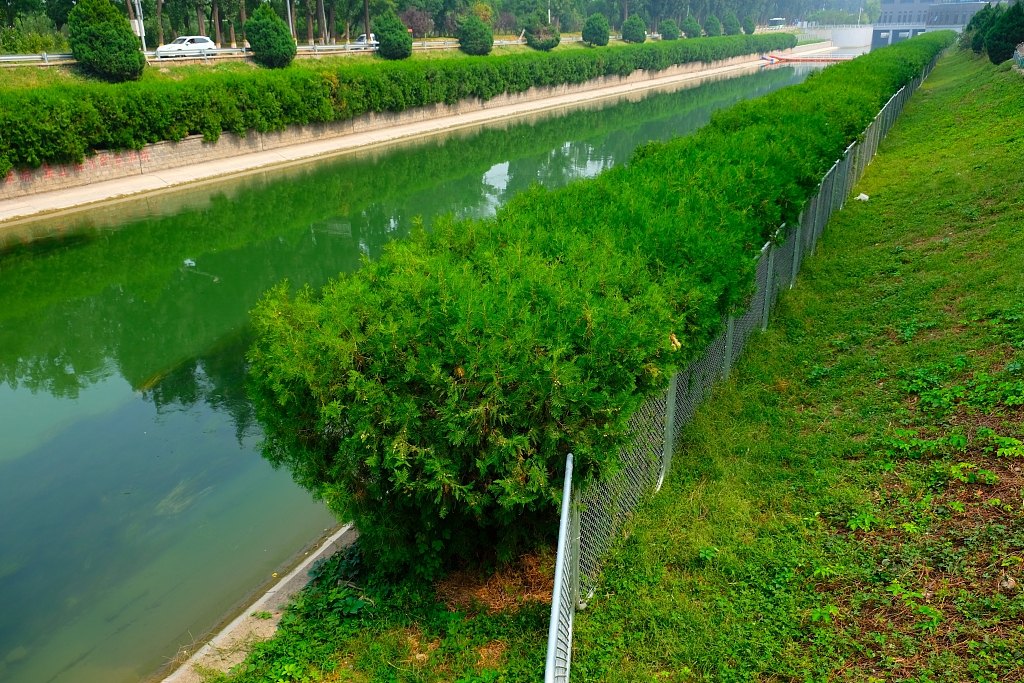
The green belt along the canal in Beijing. /VCG Photo
The green belt along the canal in Beijing. /VCG Photo
Back in the 1960s, Beijing was considered "a city on the edge of desertification." According to the Beijing Meteorological Observatory, there were on average 26 days of sandy and dusty weather during springtime in Beijing in the 1950s.
At that time, planting more trees to combat sandstorms was of utmost urgency. Among the native trees of Beijing, the highly adaptable poplars and willows stood out. Resistant to the coldness, droughts and pests here, poplars can quickly grow into neatly arranged street trees that can provide shade for passersby.
Moreover, they don't need much watering or care, which lowers maintenance costs. A one-year poplar seedling was sold at five to six yuan. Their cost-effectiveness and adaptability make them the main force in preventing desertification.
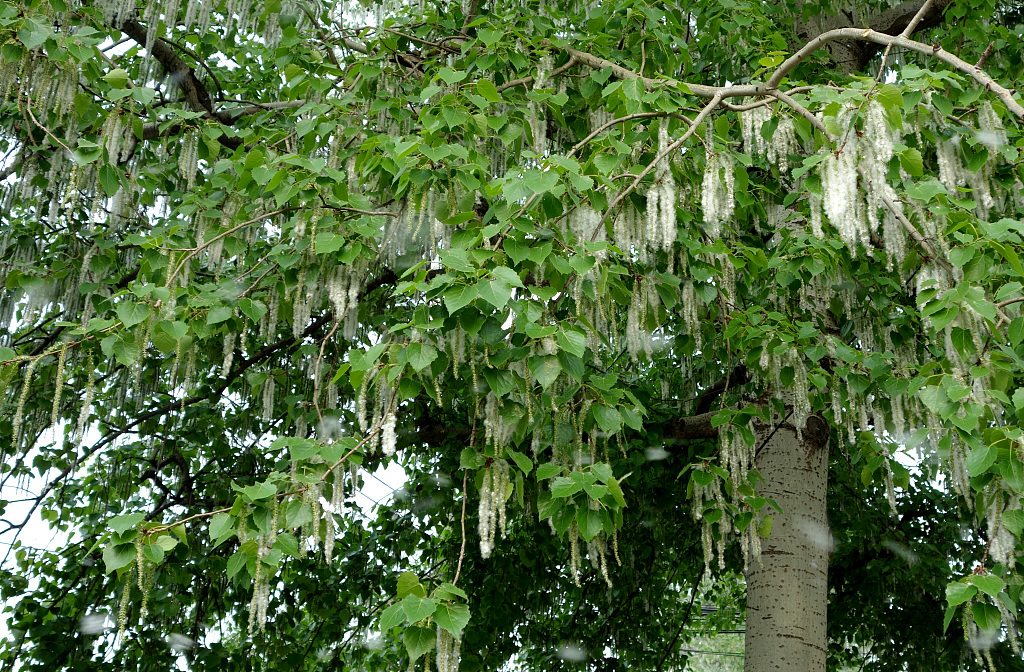
The blooming poplar tree in Chaoyang District, Beijing. /VCG Photo
The blooming poplar tree in Chaoyang District, Beijing. /VCG Photo
Even now, people can see the Chinese white poplars planted 40 years ago near Tsinghua University, Professor Zhang recalled. Compared to poplars that are primarily used as street trees and protective forests, willows mainly grow in residential areas and parks. Both of them have greatly improved the environment.
For a single poplar tree with a breast diameter of 20 centimeters, it can absorb 172 kilograms of CO2 and produce 125 kilograms of oxygen. "Compared to the three kilograms of seed hairs a poplar tree blows every spring, the ecological benefits it brings are far more significant," said Professor Zhang.
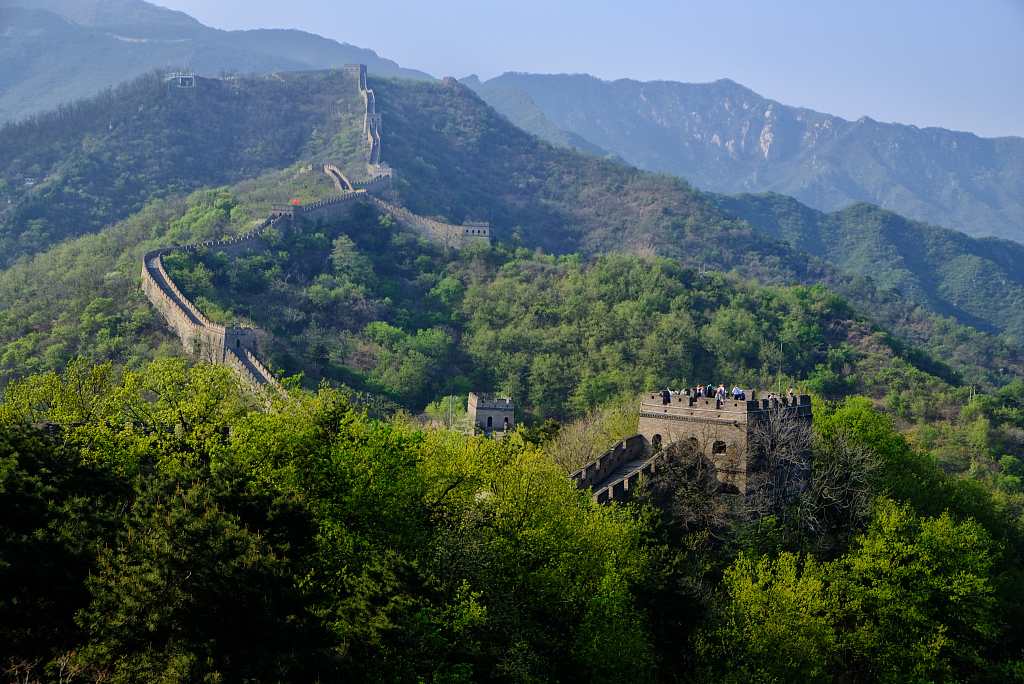
The Great Wall surrounded by green trees in Beijing. /VCG Photo
The Great Wall surrounded by green trees in Beijing. /VCG Photo
Over the years, the poplars and willows turn Beijing verdant and push Beijing back from the edge of desertification. The number of days of sand and dust weather has reduced to less than five in the 1990s, and dropped to three since 2010.
Sexuality is the key
"Female poplars and willows would spread hairy seeds, while male flowering trees would produce pollen," said Professor Zhang. To curb the seed hairs, the ideal solution is to reduce the number of female ones or make them unable to bear seed hairs.
One way is to use inhibitors to make poplars and willows not produce seed hairs. The price of one shot injected into the trunk is around 15 yuan, and it works for only one year. In 2017, around 400,000 female poplars and willows in Beijing underwent this "birth control" measure.

Workers are injecting seed hairs inhibitors into the tree in Beijing. /VCG Photo
Workers are injecting seed hairs inhibitors into the tree in Beijing. /VCG Photo
The other way is called top grafting. It needs to cut down the upper half of female poplars and graft it with branches from the male poplars. The "sterilization surgery" costs around 500 yuan per tree. There are only around 1,000 poplars and willows that underwent the surgery in the recent decade.
Given the high cost, both solutions are only applied in densely populated areas such as hospitals, kindergartens, schools, city parks and large residential areas. They can work for a short period of time but are not necessarily long-term solutions.
Since 2015, Beijing has banned planting female poplars and willows in various landscaping projects. The authority has also cultivated around 300,000 male Chinese white poplars and decided to plant them within three to five years. The effect will be seen in the future.
A Local Problem
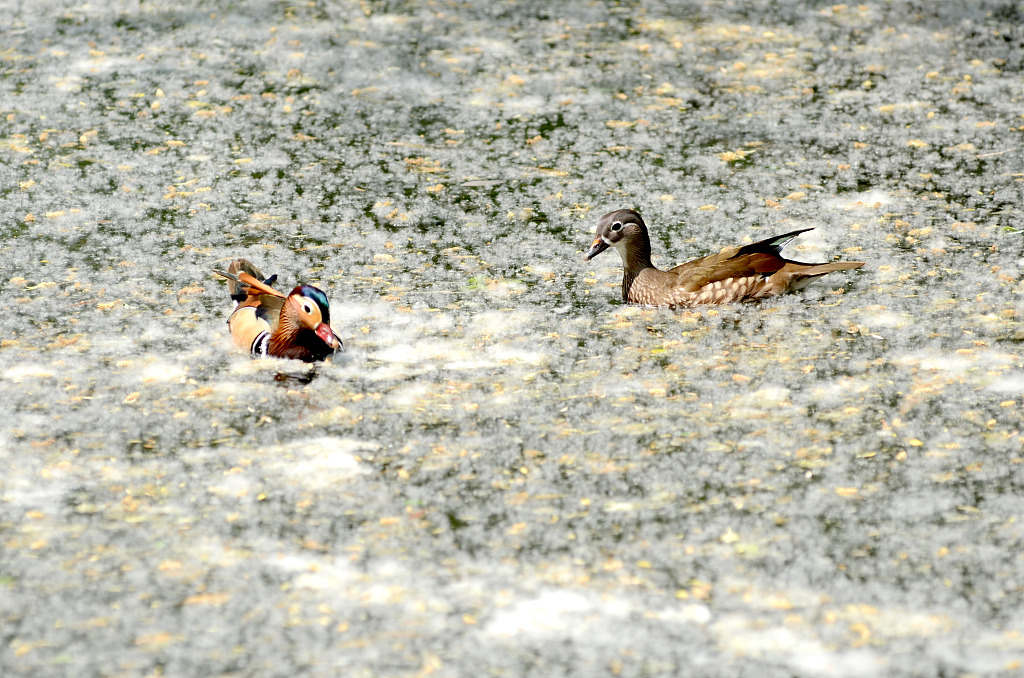
The seed hairs of poplars and willows floating on the water with a Mandarin duck pair. /VCG Photo
The seed hairs of poplars and willows floating on the water with a Mandarin duck pair. /VCG Photo
If you search "poplar and willow catkins" or "poplar snow" on the Internet, you would find that the most relevant news take place in China rather than other countries. It seems that the flying hairy seed of poplars and willows is a local problem.
According to Professor Zhang, who has spent years abroad, poplars are not widely planted as street trees in Europe. Instead, oak and linden trees are more commonly seen along the street there, which don't have the fuzzy seed hairs.
Even though some street trees in Europe like the oriental plane tree also produces seed hairs, they are mostly planted near the grasslands instead of on hard road surfaces. Grasslands can help trap the flying seed hairs on the ground, and the hairy seeds would quickly disappear after a rain.
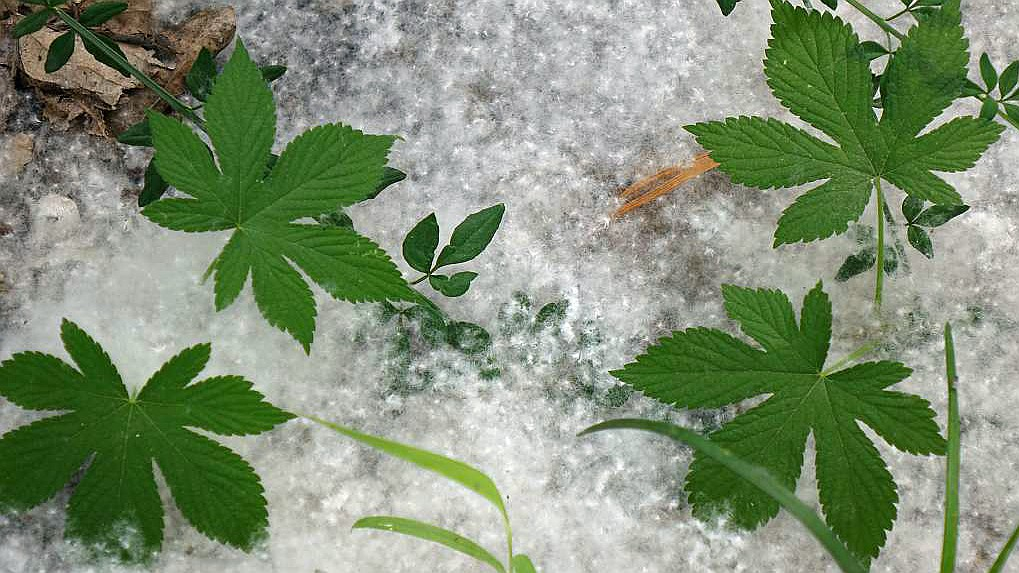
The white fluffy seed hairs on the ground. /VCG Photo
The white fluffy seed hairs on the ground. /VCG Photo
Apart from that, lower population density, good climate and advanced horticultural techniques in Europe all make the seed hairs less of a problem there, said Professor Zhang.
China is now on the way of embracing eco-friendly solutions. In 2018, the gardening authority decided to increase 667 hectares of urban green land to absorb the swirling seed hairs.
Recently, workers use high-pressure water guns to sweep the seed hairs away and clip some branches off high trees to reduce catkins that produce hairy seeds, which are more economical.
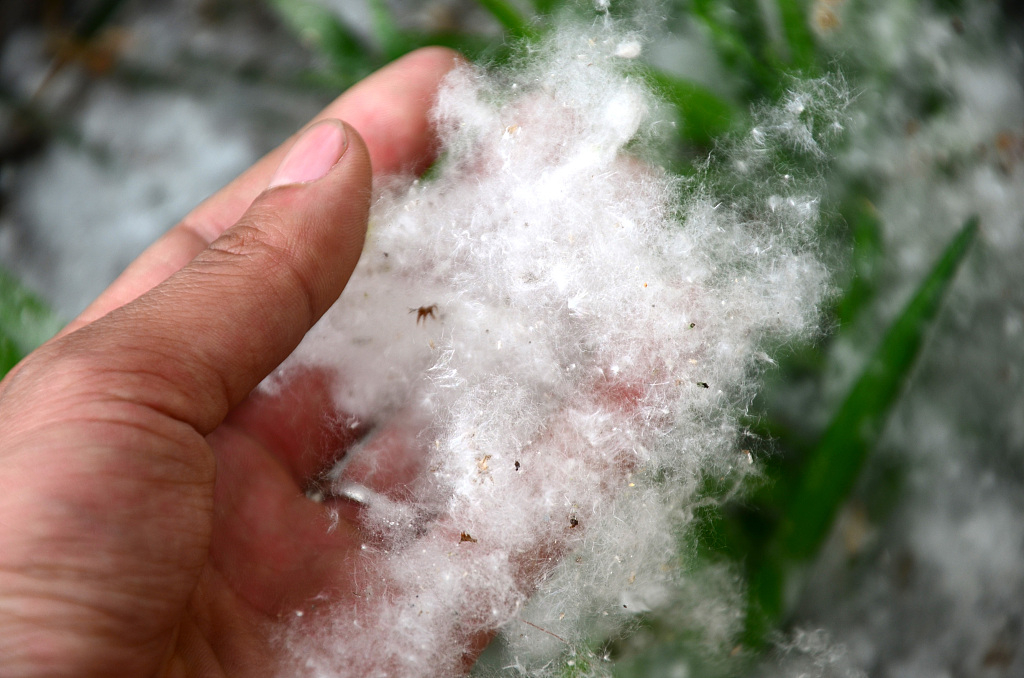
The white fuzzy seed hairs. /VCG Photo
The white fuzzy seed hairs. /VCG Photo
The next time you are annoyed by these white fluffy seed hairs, remember they will grow into the trees that block the choking sandstorms and provide you with a moment of coolness in the summer. Your patience would be worthwhile.
(Cover image via VCG)
(If you want to contribute and have specific expertise, please contact us at nature@cgtn.com.)

